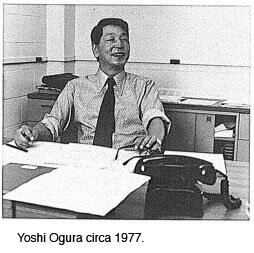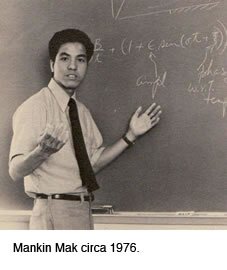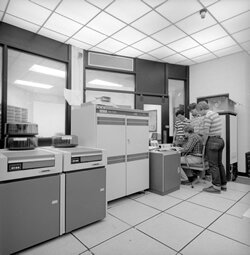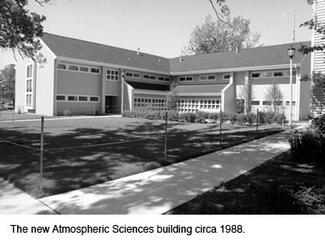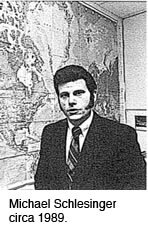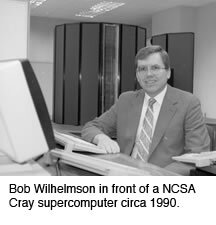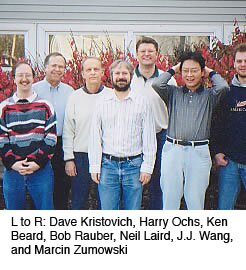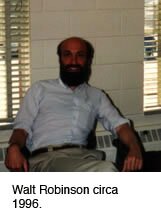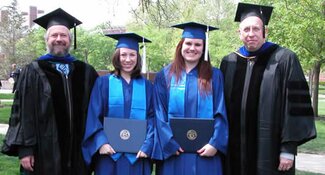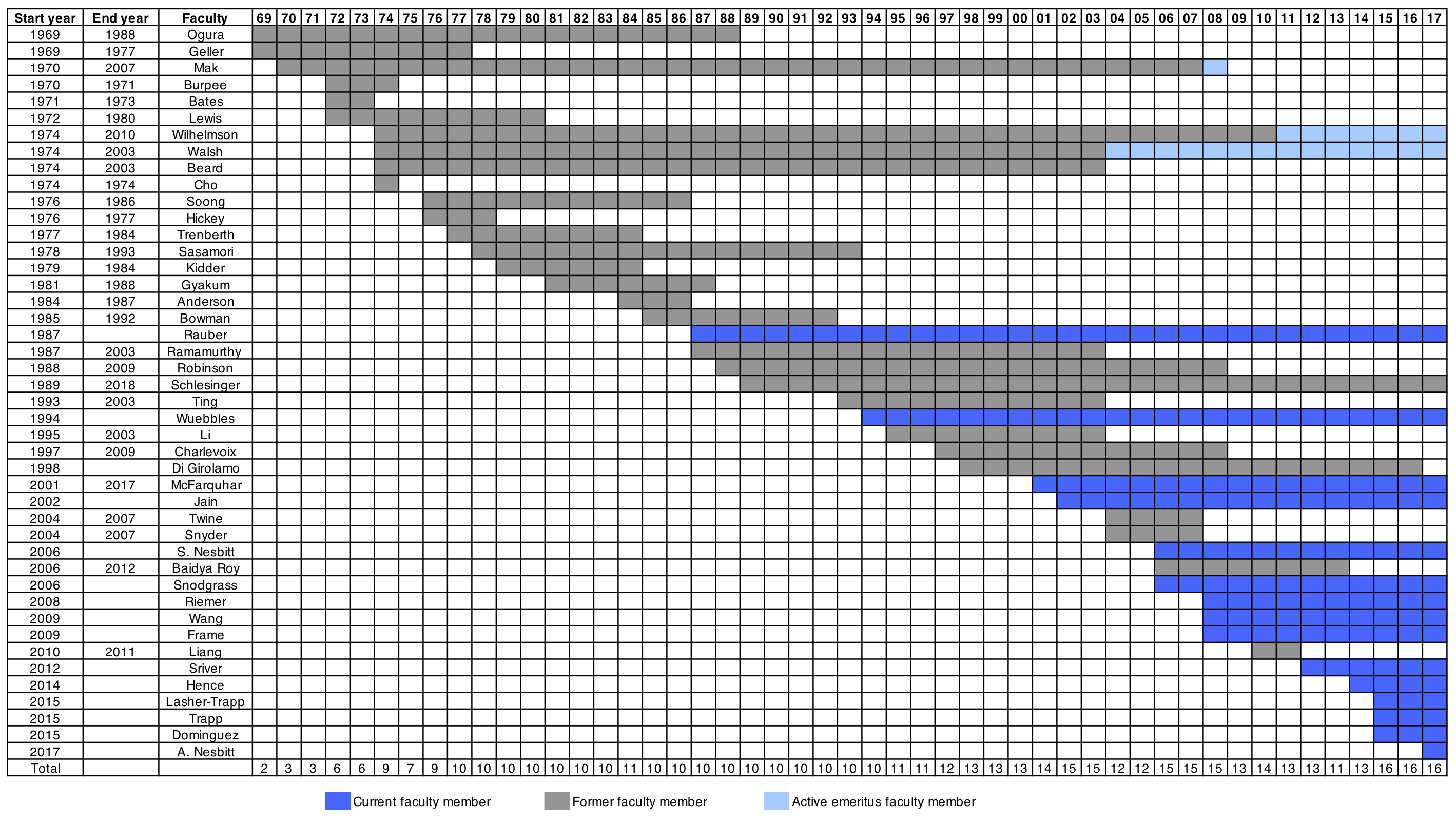DEPARTMENT OF ATMOSPHERIC SCIENCES ARTIFACTS
Below are a collection of announcements, brochures and photos.
1977 Atmospheric Sciences Program Brochure
1982 AMS Bulletin Announcing Our Department
1989 Atmospheric Sciences Brochure
DEPARTMENT FACTS & HISTORY
The Early Years
The Department of Atmospheric Sciences (DAS) had its beginnings in 1969 with the arrival of Professor Yoshimitsu Ogura to the University of Illinois campus. Professor Ogura was recruited from Japan by the University of Illinois to establish a Laboratory for Atmospheric Research (LAR) within the Graduate College. The goal was to create a graduate program on campus that would specialize in atmospheric research. At that time, Professor Ogura was a professor of marine meteorology at the University of Tokyo and the director of Japan’s Ocean Research Institute. Even then, he was no stranger to the U.S. system of academic institutions. Upon getting his doctoral degree in Meteorology in 1954 from the University of Tokyo, he had spent two years at Johns Hopkins University and six years at MIT as a visiting research scientist. He went back to University of Tokyo as a faculty member afterward, only to return again to the U.S. in 1969 and remain with our Department until 1988.
Yoshi Ogura laid the foundation for DAS by recruiting a handful of newly graduated Ph.D.’s as faculty members in the first few years of his tenure at the University. Marvin Geller had been previously hired as an Assistant Professor in Electrical Engineering, arriving at U of I about one week before Professor Ogura arrived, and he immediately began a joint affiliation with LAR. Marv Geller remembers meeting Yoshi for the first time in an office with a desk and surrounded by book cartons. Yoshi, appreciating the importance of a good library, had initiated his book and journal orders from Japan. During the following few years, Mankin Mak, J. Ray Bates, Robert Burpee and John Lewis were hired, also as Assistant Professors. Together, they initiated a multi-faceted research program and designed a suite of graduate courses in atmospheric sciences. They also began supervising the thesis research of a number of physics, electrical engineering, and computer science graduate students at the University who wished to become atmospheric scientists.
LAR was very fortunate in these early days to have excellent relations with the Department of Physics, Computer Sciences, and Electrical Engineering. Through this arrangement, LAR faculty members gained access to excellent graduate students. In these early days, Yoshi had a large number of young scientists from Japan, who had extended research visits to Illinois. Many of them went on to hold senior positions in Japanese universities and at JMA. J. Ray Bates left the department in 1973 to return to his native Ireland, and Robert Burpee resigned in 1974 to move to the National Hurricane Center, where he later became director. They were replaced in 1974 by John Walsh, Ken Beard and Bob Wilhelmson, three professors who, together with Professor Mak, guided the Department for the next three decades. Marvin Geller left Illinois in 1977 to join the faculty of the University of Miami. Bob Wilhelmson also has the honor of being the first Ph.D. to be advised by a DAS faculty member (Ogura), although Bob received his degree from the Computer Science Department. Other students advised by DAS faculty in the early years included Wayne Higgins, Mark Schoeberl, Mary Alice Rennick, Louis Gidel, James Russell, Roger Brode, Stephen Bloom, David Fritts, Tony Barnston, and Susan Avery. Susan Avery has the honor of earning the first Atmospheric Science degree, her Ph.D. in the field of Atmospheric Sciences at the University of Illinois. She received her Ph.D. in 1978, received the College of Liberal Arts and Sciences Alumni Achievement Award in 2005, was interim provost and executive vice chancellor for academic affairs at the University of Colorado, and in 2007, took over as President and Director of the Woods Hole Oceanographic Institute.
During the early years, and on through 1986, the LAR and DAS were located on the 5th floor (and later the 6th floor) of the Coordinated Science Laboratory (now called the Engineering Sciences Building) on the southeast corner of Goodwin and Springfield. In the early days, atmospheric scientists from the US and Japan were often involved in lively table tennis games on the 6th floor. At that time, the Department had an Alfax machine that produced “wet” weather maps that had to dry after printing. These maps were hung along the hallways of CSL. The department eventually expanded to occupy the 6th floor as well. The department also started development of a small library, which grew until it was merged with the University Library system in 2006. The year 1974 was also memorable as that was the year that Karen Garrelts joined DAS as its administrative secretary. Karen maintained organization in the Department and provided guidance to many students over a career lasting 28 years until her retirement in 2002. Another long time department member, Norene McGhiey, joined the office staff in 1981 and retired in 2000.
The decade of the 1970s saw the department grow from two faculty members in 1969 to ten in 1977. This growth spurt was followed by a “steady state” period between 1978 and 1982 when faculty numbers remained constant at ten. Although the number stayed constant, some names changed. Incoming faculty members in the 1970s and early 1980s included Han-Ru Cho, Kevin Trenberth, Takashi Sasamori, Su-Tzai Soong, Stan Kidder, Brian Hickey, and John Gyakum.

